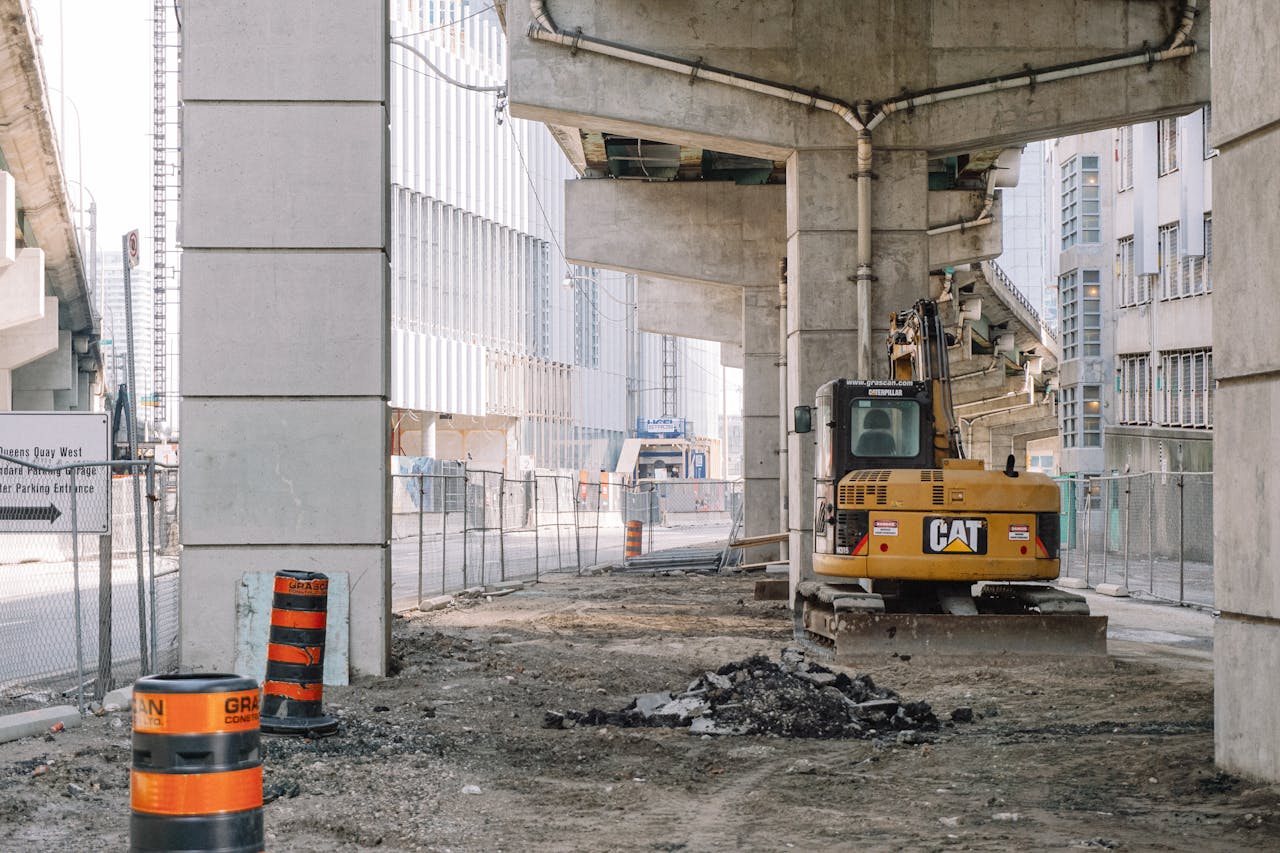What Is Hydro Excavation? How It Works and Why It’s the Safer Way to Dig
Excavation is a fundamental process in construction, landscaping, and utility installation. From laying new fiber optic lines to planting trees, the need to dig is constant. However, traditional mechanical digging methods-using backhoes, excavators, or shovels-carry a significant risk: damaging critical underground infrastructure. A single misplaced bucket can rupture a gas line, sever a water main, or cut off internet service for an entire neighborhood, leading to dangerous situations, costly repairs, and massive project delays.
Enter hydro excavation, a modern, non-destructive alternative that is revolutionizing how we dig. By combining pressurized water and powerful vacuum technology, this method offers unparalleled precision and safety. This article will explain what hydro excavation is, detail how it works step-by-step, and explore why it is rapidly becoming the preferred method for safe, efficient, and compliant excavation across numerous industries.
What Is Hydro Excavation?
Hydro excavation, often referred to as “soft digging” or “vacuum excavation,” is a non-mechanical digging process. It uses a focused stream of pressurized water to break up and liquefy soil, which is then simultaneously removed by a high-powered vacuum system and stored in a debris tank.
This technology was developed specifically to address the growing need for a safer way to expose and work around the dense network of underground utilities. By eliminating sharp mechanical tools from the initial digging process, hydro excavation drastically reduces the risk of damaging gas lines, water pipes, electrical conduits, and telecommunications cables. It’s the gold standard for precision digging where you can’t afford to make a mistake.
How Hydro Excavation Works (Step-by-Step Process)
The hydro excavation process is a straightforward yet highly effective sequence:
- Pressurized Water Injection: The operation begins with a specialized wand that directs a stream of highly pressurized, heated water into the ground. This jet cuts through soil and clay with precision, loosening it without the damaging force of a backhoe tooth. The operator has exact control over the depth and area being excavated.
- Vacuum Extraction: As the water breaks up the soil, it creates a slurry-a mixture of water and soil debris. A powerful vacuum hose is positioned immediately adjacent to the excavation point, instantly suctioning this slurry away. This leaves a clean, clear hole or trench.
- Debris Storage: The extracted slurry is transported through the vacuum hose into a large debris tank mounted on the hydro excavation truck. This tank securely contains the material until it can be properly disposed of.
- Disposal: Once the job is complete, the slurry is transported to an approved disposal site, ensuring an environmentally responsible end to the process.
Equipment Used in Hydro Excavation
The key to this process is the specialized equipment, primarily the hydro vac truck.
- Hydro Vac Truck: This is the central unit, combining a high-pressure water system, a heating unit, a powerful vacuum system, and a debris storage tank all in one vehicle.
- Heated Water System: An integral component, especially in colder climates. The ability to heat the water allows crews to dig through frozen ground, making hydro excavation a viable year-round solution.
- Vacuum System: Two main types of vacuum systems are used. Positive Displacement Blowers are powerful and ideal for moving heavy, dense slurry over longer distances, while Fan Systems are better for lighter materials and drier conditions.
- Debris Tank: Ranging in size from smaller units for compact urban work to very large tanks for major projects, this container holds all the excavated material.
Benefits of Hydro Excavation
The advantages of hydro excavation over traditional methods are compelling:
- Enhanced Safety: This is the primary benefit. The non-destructive nature of water drastically reduces the risk of striking and damaging underground utilities, protecting workers, the public, and infrastructure.
- Superior Precision: Operators can excavate with pinpoint accuracy, making it ideal for exposing single utility lines, working in tight spaces, or digging around sensitive obstacles like tree roots.
- Speed & Efficiency: The process is significantly faster than manual digging and cleaner than mechanical excavation, resulting in less site restoration and shorter project timelines.
- Environmental Protection: Hydro excavation causes minimal disruption to the surrounding soil structure and ecosystem. It also centralizes waste for proper disposal, preventing contamination.
- Cost Savings: While the per-hour rate may be higher than a traditional excavator, the avoidance of a single utility strike-which can cost tens of thousands of dollars in repairs, fines, and delays-makes it incredibly cost-effective.
- All-Weather Capability: With heated water systems, hydro excavation crews can work efficiently even in freezing temperatures, overcoming a major limitation of other digging methods.
Case Example: For instance, when a telecommunications company needed to locate a specific fiber optic line buried beneath a busy downtown sidewalk, hydro excavation allowed the crew to safely and cleanly expose the line without damaging adjacent power conduits or disrupting pedestrian traffic.
Common Uses for Hydro Excavation
This versatile method is applicable in a wide range of scenarios:
- Utility and Pipeline Installation: Safely creating trenches for new lines.
- Daylighting/Potholing: Verifying the exact location and depth of existing utilities before larger-scale digging begins.
- Cold-Weather Digging: The go-to method for winter excavation projects.
- Slot Trenching: Ideal for installing cables, conduit, and irrigation lines.
- Pole or Sign Installation: Digging clean, round holes with minimal surface disruption.
- Landscaping and Tree Root Exposure: Carefully excavating around root systems without causing harm.
- Pipeline Maintenance and Repair: Safely exposing pipelines for inspection or repair without causing further damage.
Hydro Excavation vs. Traditional Excavation
While traditional excavation with heavy machinery has its place in large, open areas with no buried infrastructure, it is a blunt instrument compared to hydro excavation. The key difference lies in risk management. Traditional digging poses a constant threat to underground assets, whereas hydro excavation is a controlled, precise process. Although the initial cost of hydro excavation may be slightly higher, it is an investment in safety and reliability that pays for itself by eliminating the monumental costs and dangers associated with utility strikes.
Safety and Compliance Considerations
Hydro excavation is more than just a best practice; it’s a cornerstone of modern jobsite safety. The process aligns perfectly with OSHA guidelines for safe excavation and meets the damage prevention standards advocated by organizations like the Common Ground Alliance (CGA). By reducing manual labor and minimizing the use of heavy machinery at the point of excavation, it also lowers the risk of worker injury. For these reasons, many municipalities now require or strongly recommend hydro excavation for any public works project involving utility exposure.
When to Use Hydro Excavation (and When Not To)
Hydro excavation is the superior choice for:
- Projects in urban or congested areas.
- Any task requiring exposure of existing utilities.
- Situations where precision and safety are the top priorities.
It may be less cost-effective for:
- Large, open-field projects with no known underground infrastructure where traditional excavation can proceed quickly and without risk.
When in doubt, consulting with a professional hydro excavation company for a project assessment is the wisest course of action.
Final Thoughts
Hydro excavation represents a significant leap forward in excavation technology. It offers a demonstrably safer, cleaner, and more accurate approach that protects vital infrastructure, the environment, and human safety. By choosing this method, project managers and property owners are not just completing a task-they are investing in risk mitigation and project success. The effectiveness of this process hinges on professional crews operating well-maintained, proper equipment, ensuring the highest standards of quality and safety are met.
Need safe and precise excavation for your next project? Our hydro excavation experts deliver unmatched accuracy, efficiency, and peace of mind. Contact us today for a free quote and see the difference for yourself.



